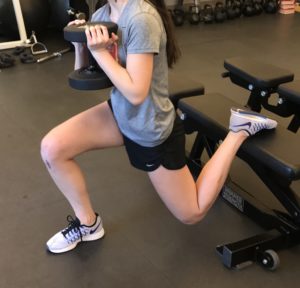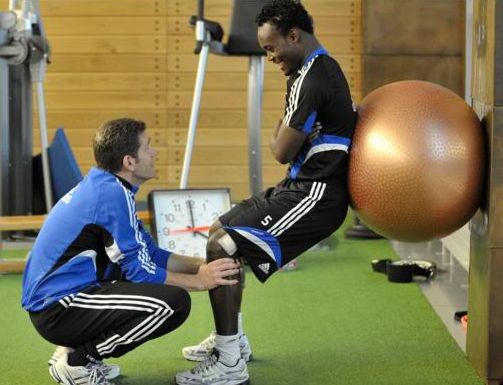“time or metrics alone is not sufficient for determining readiness for sport participation”
Having an ACL reconstruction is not mandatory if you’ve torn it. The primary reason someone would elect to have a reconstruction is to return to their sport. In the USA, 250,000 ACL injuries occur each year. There are a variety of potential short and long-term impairments including muscle weakness, functional movement limitations, low or no sport participation and increased chances of reinjury (1).
Today’s post is discussing some of the statistics on reinjury as well as thoughts on prevention.

Current research says about 30% of young active athletes who have an ACL reconstruction suffer a second rupture in the first few years after surgery. Within 5 years, 50% of those people may undergo meniscus surgery (1). It is possible, however, to reduce these numbers through sound decision making, incredibly thorough rehabilitation as well as individualized strength and conditioning. Our primary goals in return to sport are always injury prevention, improving movement quality and strength, and promoting sport related conditioning/readiness.
During the first 9 months after surgery, a later return to sport reduces the reinjury rate by 51% for each month delayed. Returning to sport earlier than 9 months increased odds of injury by almost 40% compared to about 19% knee reinjury in those who returned later than 9 months (1).
What does this mean exactly? This says that returning to play, in uncontrolled game time environments, earlier than 9 months has shown increased likelihood of an injury. That being said, I would highly encourage when someone is ready, to integrate controlled and modified training prior to 9 mo. This could mean low-level cutting drills on the field, adding controlled contact, reaction drills or simply running with your cleats on. Training skills in an isolated environment first and integrating them together as tolerated is key to promote exposure and reinforcement in developing quality movement skills and confidence. This allows us to control more of the variables and promote a safe environment for learning, skill acquisition and building confidence.
In the fall of 2016, I started working with a high school soccer player for both pre-surgery and post-operative ACL reconstruction and will soon be playing D1 ball. At around 6 months post-op, she stepped on the field for the first time with me. This training session was built around introduction to simple tasks on the field consisting of modified speed running and cutting, low speed ball work and planned reaction drills. Easy to understand with minimal variables. There is a huge difference between sprinting to a cone and reacting to my voice and an 11 v 11 game situation. The later is where return-to-play after 9 months would be most advantageous all the while utilizing great training and rehab to get you there.
How do we know if someone is ready to return to sport?
Time is not the only piece to successful return to sport. Having a thorough, objective and efficient testing protocol is imperative, as well as sound goal oriented strength and conditioning. Here I am referring to (1) hop/jump testing and (2) strength assessment.
- Utilizing a battery of hop/jump testing is essential as it can objectively measure symmetry from left to right in distance jumped and time, as well as it is neuromuscular and power assessment activity incorporating balance, reaction and landing patterns.
Hop Testing Activities:
- Single hop for distance
- Crossover hop for distance
- Triple hop for distance
- 6 meter timed hop
Each patient will pass ONLY if they score >90% relative to the uninvolved side for each test as promoting symmetry is the biggest factor in this scenario in keeping you on (or off) the field! Having hop tests scored at LESS THAN 90% of the uninvolved side increases risk of injury on the field.
2. In our strength assessment, we utilize these skills to develop greater global movement, power, and allow the body to tolerate and sustain higher loads. Research has shown quadriceps asymmetry can be present up to 2 years after surgery. This asymmetry is associated with altered knee biomechanics during hopping and landing as well as postural/trunk control deficits and altered neuromuscular control of the hip and knee. (2) Addressing all of these factors are imperative in rehabilitation, recovery and return to sport.
I like to see my athletes showing greater strength relative to their body weight with these particular lifts and see our athletes hitting 1.5x body weight for a 1 rep max. To put that in perspective, it means a 150 lbs athlete should be able to squat 225 lbs for 1 repetition. Are you able to do this? This allows the athlete to demonstrate true strength and control of loads greater than their weight alone. This will inevitably lead to a more durable, sound moving, stronger and faster athlete.
- Front Squat
- Reverse Lunge
- Trap Bar Deadlift
The high school soccer player mentioned above at the 6 month mark in her rehab was squatting 185 lbs and reverse lunging 150 lbs which was 1.5 and 1.2x body weight respectively. Currently, her trap bar deadlift is estimated just under 2x her body weight. This past season, her commitment and effort helped her become the leading goal scorer on her team and an all-state selection player.
Our biggest goals in getting players back on the field is making sure they can do so safely, reducing the risk of secondary injury (ACL, meniscus, early onset arthritis, etc), and lastly making sure they are able to perform at a higher level than they were before. We require our athletes to adhere to both time based and criteria based return to sport metrics as time or metrics alone is not sufficient for determining readiness for sport participation.
Never forget that we are the product of our own training. The effort you and the team supporting you put in will lead to your outcome.
Questions? Comment below or email me at mike@mikestaropoli.com
Sign up for our FREE Newsletter
Recieve performance physical thearpy, nutrition and training tips!
You have Successfully Subscribed!
References
- Grindem, Hege, Lynn Snyder-Mackler, Håvard Moksnes, Lars Engebretsen, and May Arna Risberg. “Simple decision rules can reduce reinjury risk by 84% after ACL reconstruction: the Delaware-Oslo ACL cohort study.” Br J Sports Med. BMJ Publishing Group Ltd and British Association of Sport and Exercise Medicine, 01 July 2016. Web. 29 Mar. 2017.
- Paterno MV, Schmitt LC, Ford KR, et al. Biomechanical measures during landing and postural stability predict second anterior cruciate ligament injury after anterior cruciate ligament reconstruction and return to sport. Am J Sports Med2010;38:1968–78

